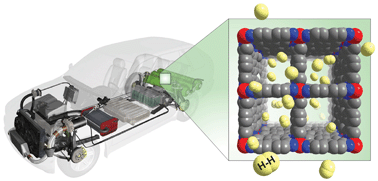Hydrogen storage in metal–organic frameworks†
Abstract
New materials capable of storing hydrogen at high gravimetric and volumetric densities are required if hydrogen is to be widely employed as a clean alternative to

- This article is part of the themed collection: Metal Organic Frameworks

 Please wait while we load your content...
Please wait while we load your content...